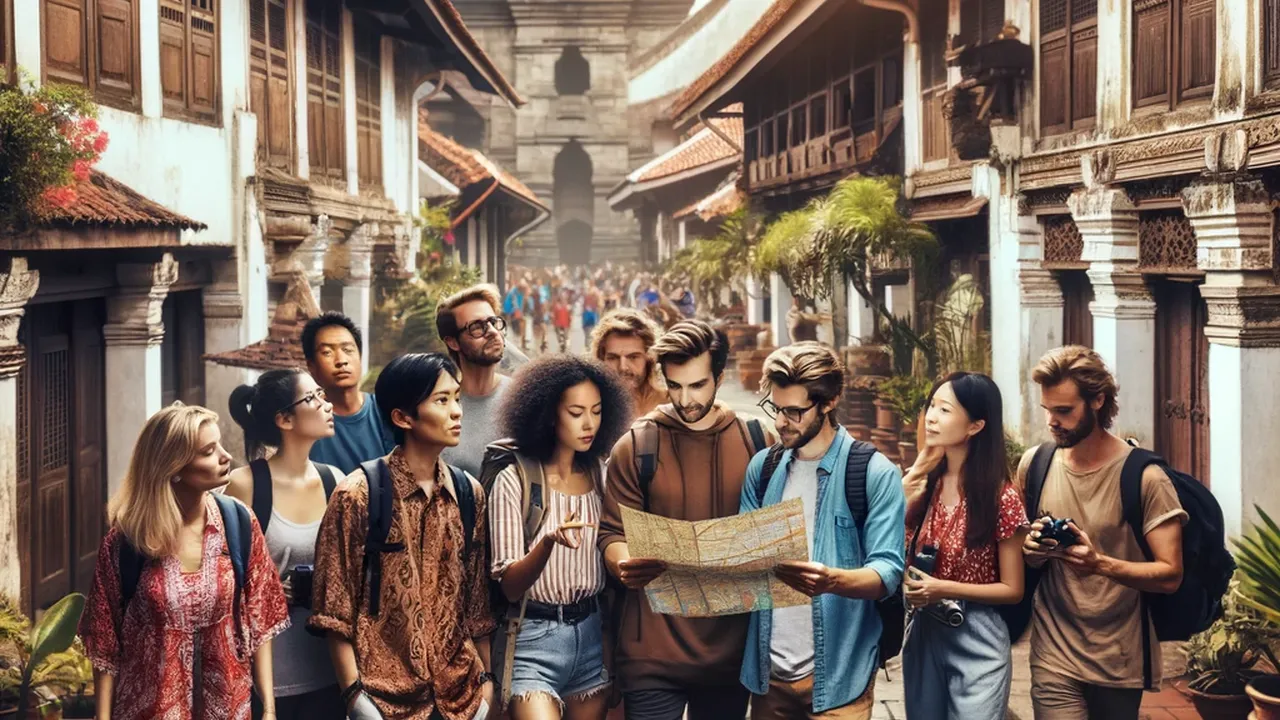
Exploring Indonesian Old Towns and History
Indonesia, a land steeped in cultural richness and historical depth, offers a unique journey into the past through its array of Indonesian Old Towns. These ancient hubs are not just remnants of history but living museums, showcasing a blend of architectural marvels and cultural tapestries. As we delve into the heart of these historic towns, we uncover stories that shaped the nation and experience the diversity that defines Indonesia’s heritage. This exploration is not just a tour, but a vivid journey through time, revealing the soul of Indonesian history and tradition.
Discovering Indonesia’s Heritage
Embarking on a journey through Indonesia’s old towns is akin to unwrapping a treasure trove of cultural and historical richness. Each town, with its unique blend of architecture and traditions, serves as a testament to the diverse influences that have shaped the nation. From the Dutch colonial buildings to the ancient Javanese palaces, these towns offer a window into the varied epochs of Indonesian history.
In the streets of Kota Tua in Jakarta, travelers are greeted with an atmosphere that echoes the stories of colonial Indonesia. The meticulously preserved buildings, now converted into museums and galleries, narrate tales of a bygone era. Here, history enthusiasts can immerse themselves in the legacy left behind by centuries of colonial rule.
Yogyakarta presents a contrasting picture, one that is deeply rooted in the Javanese culture and traditions. The Keraton (Sultan’s Palace) stands as a symbol of the city’s royal heritage, surrounded by ancient structures that showcase classical Javanese architecture. This city not only preserves its past but also breathes life into it, through ongoing cultural practices and ceremonies.
Further east, the quaint town of Lasem, often referred to as ‘Little China’, offers a unique fusion of Chinese and Javanese culture. Its ancient temples and vibrant Peranakan heritage paint a picture of the rich cultural exchange that has occurred over centuries. Lasem’s story is just one example of how Indonesian Old Towns are not merely historical sites, but living narratives of a country’s rich and diverse heritage.
Read Also: Discover Ujung Park of Karangasem in Bali
A Journey Through Time
Exploring the old towns of Indonesia is like traveling through a timeline of history and culture. Each town has its own story, deeply entwined with Indonesia’s complex past. From the ancient Hindu and Buddhist empires that left their mark in architectural wonders, to the more recent colonial era, every corner of these towns is a piece of a historical puzzle.
In Semarang’s Kota Lama, the legacy of the Dutch East Indies is vividly alive in the form of majestic colonial buildings and historical landmarks. Walking through these streets, one can almost hear the whispers of the past, telling stories of trade, governance, and daily life during colonial times. The fusion of European architecture with local designs creates a unique aesthetic that is both intriguing and educational.
Yogyakarta, on the other hand, offers a glimpse into the royal history of Java. The grandeur of the Keraton and the sacredness of temples like Prambanan speak volumes about the city’s significance as a cultural and spiritual center. The intricate artistry of these structures not only showcases the architectural skills of the Javanese but also their deep philosophical and religious beliefs.
In Bandung, the art deco style of building from the early 20th century reflects a different era of Indonesian history. This style, rare in Asia, marks a period of transition and modernization in Indonesian society. Strolling through Bandung’s historical districts, visitors can witness how Indonesia embraced modernity while retaining its unique cultural identity.
Unveiling Historical Gems
Indonesia’s old towns are a treasure trove of historical gems, each with a unique story to tell. In Surabaya, the Kota Tua area showcases a rich blend of Indonesian and Dutch colonial heritage, reflected in its historic buildings and bustling marketplaces. These landmarks not only represent the architectural splendor of the past but also the complex history of trade and cultural exchange that shaped modern Indonesia.
In the heart of Sumatra, the charming village of Nagari Pariangan stands as a beacon of Minangkabau culture. Here, the iconic rumah Gadang with their sweeping roofs symbolize the matrilineal society of the Minangkabau people. This village is not just a picturesque site; it’s a living museum, offering insights into the unique social and architectural heritage of West Sumatra.
Moving towards the eastern archipelago, the old town of Ampenan in Lombok presents a different aspect of Indonesia’s history. Once a bustling port town, Ampenan is a melting pot of cultures, where ancient mosques stand alongside Chinese temples and Dutch colonial buildings. This diversity is a testament to the maritime history of Indonesia, highlighting the island’s role as a crossroads of civilizations and trade routes.
Each of these historical gems provides a unique perspective on Indonesia’s rich and varied past. They are not just static relics but vibrant communities where history continues to live and breathe. Visiting these towns offers more than just a glimpse into the past; it’s an immersive experience into the traditions and stories that have shaped the diverse tapestry of Indonesian culture.

The exploration of Indonesia’s old towns offers a profound and enriching experience in historical tourism, allowing travelers to immerse themselves in the nation’s rich cultural tapestry and complex past. These journeys provide more than just a visual feast of architectural wonders; they offer a deeper understanding of the diverse influences that have shaped Indonesia. Each town, from the bustling streets of Jakarta to the serene villages of Sumatra, serves as a living museum, preserving and celebrating the unique heritage that defines Indonesia. Thus, historical tourism in these ancient locales is not only about discovering Indonesia’s history but also about experiencing the vibrant continuation of traditions that are as captivating as they are educational.







